Shop > Apple trees > Dwarfing
Apple trees available on dwarfing rootstocks
Select a dwarfing rootstock on the product page before adding to your basket.
Dwarfing rootstocks quick guide: M27 = Very dwarfing (2m height), M9 = Dwarfing (2-3m height), M26 = Semi-dwarfing (3-3.5m height)
Bare root
A very old variety of apple with an unusual shape, as suggested by the name. A cooking apple, it is juicy with a sharp flavour and cooks down to a puree.
Type: Culinary
Season: Oct-Jan
Pollination: Self-sterile. Triploid (can’t pollinate others). Pollination group C
A modern, disease-resistant variety with a refreshing sharp flavour. Medium-sized apples with red-flushed skin and crisp, cream-coloured flesh.
Type: Dessert
Season: October-January
Pollination: Self-sterile. Pollination group D
A small, sweet apple which is a favourite with children due to its size. The colour is a deep red, almost purple.
Type: Dessert
Season: October
Pollination: Self-fertile. Pollination group C
A classic English russet variety. The fruit are juicy and crisp with a strong sharp flavour and store well.
Type: Dessert
Season: December-March
Pollination: Self-sterile. Pollination group C
An exceptional apple with a powerful nutty flavour, honey sweet yet sharp. Fruit is small and a warm yellow colour.
Type: Dessert
Season: October-November
Pollination: Self-sterile. Pollination group C
One of the best early season apple varieties. Produces reliable crops of attractive red fruit that is particularly good for juicing.
Type: Dessert
Season: September
Pollination: Self-sterile. Pollination group C
A very large red-flushed eating apple with a superb flavour that is similar to Cox. The tree grows vigorously and produces a reliable heavy crop.
Type: Dessert
Season: October-January
Pollination: Self-sterile. Triploid (can’t pollinate others). Pollination group D
An attractive, red-flushed dessert apple with good frost resistance. Fruit is crisp and sweet.
Type: Dessert
Season: October-December
Pollination: Self-sterile. Pollination group D
A popular heavy-cropping dual-purpose variety from Scotland. Red flush stripes over pale green with a creamy white flesh. Excellent refreshing flavour and a reliable cropper.
Type: Dessert/Culinary
Season: September-October
Pollination: Partially self-fertile. Pollination group C
Easy to grow, heavy and regular crops. Honeyed and very sweet when left on the tree to ripen. Fruit stores well, and is versatile - can be used for cooking and eating.
Type: Dessert
Season: November - February
Pollination: Partially self-fertile. Group 4
Medium sized apple, good balance between sweetness and sharpness. Flavour and soft flesh are reminiscent of a firm pear. Easy to grow. Perfect for juicing and tarts. Excellent pollinator for ‘Cox’ and ‘Braeburn‘ varieties.
Type: Dessert
Season: October-January
Pollination: Partially self-fertile. Pollination group B
*indicates a tree that has been grown at another nursery and is for resale
A flavoursome, well-balanced russeted apple that is easy to grow and store.
Type: Dessert
Season: October-April
Pollination: Self-sterile. Pollination group C
Easy to grow early variety. Crisp and juicy red apple with hints of strawberry. Best eaten straight from the tree.
Type: Dessert
Season: August-September
Pollination: Self-sterile. Pollination group C
*indicates a tree grown at another nursery for resale.
Similar to Cox's Orange Pippin but self-fertile. Aromatic, juicy, crisp apples for harvesting late September to October.
Type: Dessert
Season: September-November
Pollination: Self-fertile. Pollination group C
The definitive English cooking apple. This vigorous tree produces large, flat fruit with a vivid green skin and acidic white flesh that cooks down to a smooth puree. Stores well.
Type: Culinary
Season: October-March
Pollination: Self-sterile. Triploid (can’t pollinate others). Pollination group D
*indicates a tree grown at another nursery for resale.
A late season dual-purpose variety with a strong, rich aromatic flavour. The blossom and fruit are both very attractive.
Type: Dessert/Culinary
Season: October-March
Pollination: Self-sterile, pollination group D
An exceptionally large and attractive culinary apple that is quite sweet and keeps its shape when cooked. Vigorous grower and heavy cropper.
Type: Culinary
Season: Oct-Mar
Pollination: Partially self-fertile. Pollination group C
A popular and versatile dual-purpose variety, widely grown in the Victorian era. Apples have a good flavour when ripe and keep their shape when cooked.
Type: Dessert/Culinary
Season: October-January
Pollination: Self-fertile. Pollination group D
An old-fashioned late dessert apple that was popular in Victorian England. The taste is on the dry sharp side, with a blend of subtly sweet, nutty flavours.
Type: Dessert
Season: October-March
Pollination: Self-sterile. Pollination group C
Potted
A red fleshed dessert variety with medium sized fruit. A disease resistant variety.
Type: Dessert
Season: Sep-Nov
Pollination: Self-fertile. Pollination group C
A very hardy, heavy cropping late season cooking apple. Cooks to a sharp, fruity white puree.
Type: Culinary
Season: October-January
Pollination: Self-sterile. Pollination group C
An early variety that can also be stored. Produces attractive fruit of medium size that are firm, crispy and sweet.
Type: Dessert
Season: August-December
Pollination: Self-sterile. Pollination group C
An exceptionally large and attractive culinary apple that is quite sweet and keeps its shape when cooked. Vigorous grower and heavy cropper.
Type: Culinary
Season: Oct-Mar
Pollination: Partially self-fertile. Pollination group C
A late dessert apple that stores well. Of a conical shape, flushed crimon with an excellent crisp flavour.
Type: Dessert
Season: October-March
Pollination: Self-sterile. Pollination group C
A late keeping cooking variety with firm, fine flesh and an acid flavour.
Type: Culinary
Season: September
Late-season Sheffield eating apple. A heavy, reliable cropper with crisp, juicy and sweet fruits that can hang on the tree into the new year.
Type: Dessert
Season: October-January
Pollination: Unknown
A good cooking apple, round-conical in shape. Keeps some of its shape when cooked and suitable for growing in northern Britain.
Type: Culinary
Season: October-December
Pollination: Partially self-fertile. Pollination group D
A modern, disease-resistant variety with a refreshing sharp flavour. Medium-sized apples with red-flushed skin and crisp, cream-coloured flesh.
Type: Dessert
Season: October-January
Pollination: Self-sterile. Pollination group D
A small, sweet apple which is a favourite with children due to its size. The colour is a deep red, almost purple.
Type: Dessert
Season: October
Pollination: Self-fertile. Pollination group C
A classic English russet variety. The fruit are juicy and crisp with a strong sharp flavour and store well.
Type: Dessert
Season: December-March
Pollination: Self-sterile. Pollination group C
Easy to grow mid-season dessert apple that is disease resistant and stores well. The fruit are yellow-green and deliciously crisp, sharp and refreshing.
Type: Dessert
Season: September-November
Pollination: Self-sterile. Pollination group D
One of the best early season apple varieties. Produces reliable crops of attractive red fruit that is particularly good for juicing.
Type: Dessert
Season: September
Pollination: Self-sterile. Pollination group C
A very large red-flushed eating apple with a superb flavour that is similar to Cox. The tree grows vigorously and produces a reliable heavy crop.
Type: Dessert
Season: October-January
Pollination: Self-sterile. Triploid (can’t pollinate others). Pollination group D
Easy to grow, heavy and regular crops. Honeyed and very sweet when left on the tree to ripen. Fruit stores well, and is versatile - can be used for cooking and eating.
Type: Dessert
Season: November - February
Pollination: Group 4
Exceptionally flavoursome orange-flushed dessert apple. Very juicy, with soft flesh almost like a pear. Fruit develops a hint of aniseed flavour when very ripe.
Type: Dessert
Season: September-October
Pollination: Self-fertile. Pollination group D
A flavoursome, well-balanced russeted apple that is easy to grow and store.
Type: Dessert
Season: October-April
Pollination: Self-sterile. Pollination group C
Easy to grow early variety. Crisp and juicy red apple with hints of strawberry. Best eaten straight from the tree.
Type: Dessert
Season: August-September
Pollination: Self-sterile. Pollination group C
A very old variety of apple with an unusual shape, as suggested by the name. A cooking apple, it is juicy with a sharp flavour and cooks down to a puree.
Type: Culinary
Season: October-January
Pollination: Self-sterile triploid (can't pollinate others). Pollination group C.
The definitive English cooking apple. This vigorous tree produces large, flat fruit with a vivid green skin and acidic white flesh that cooks down to a smooth puree. Stores well.
Type: Culinary
Season: October-March
Pollination: Self-sterile. Triploid (can’t pollinate others). Pollination group D
A mid-season, heavy-cropping culinary apple with a light, sweet, juicy flavour.
Type: Culinary
Season: September-November
Pollination: Self-sterile. Pollination group C
An ancient apple variety known for its small, sweet, dark red flush fruit and beautiful white flowers. Heavy cropping and can be stored until April.
Type: Dessert
Season: October-April
Pollination: Self-sterile. Pollination group C
An old American variety producing sweet, juicy dessert apples with a hint of vanilla flavour.
Type: Dessert
Season: October-December
Pollination: Partially self-fertile. Pollination group C
An excellent dual-purpose variety that is also good in cider. Pale yellow skin with a red flush. Strong flavour with a hint of pineapple. Stores well.
Type: Dessert/Culinary/Cider
Season: October-April
Pollination: Self-fertile. Pollination group C
Delivery, Collection and FAQs
-
We deliver bare root trees (dispatched Nov-Apr) but not potted trees. Potted trees are collection only from Leeds (or we can deliver locally by arrangement).
-
See our Delivery & Collection Info page for up-to-date delivery rates.
-
Yes, you can collect your order from Kirkstall, Leeds. We send the full details when you place your order.
-
This varies, but broadly speaking trees classified as Small are 3-4ft and 1 year old. Trees classified as Large are 4-6ft. are 2-3 years old and have some established branches.


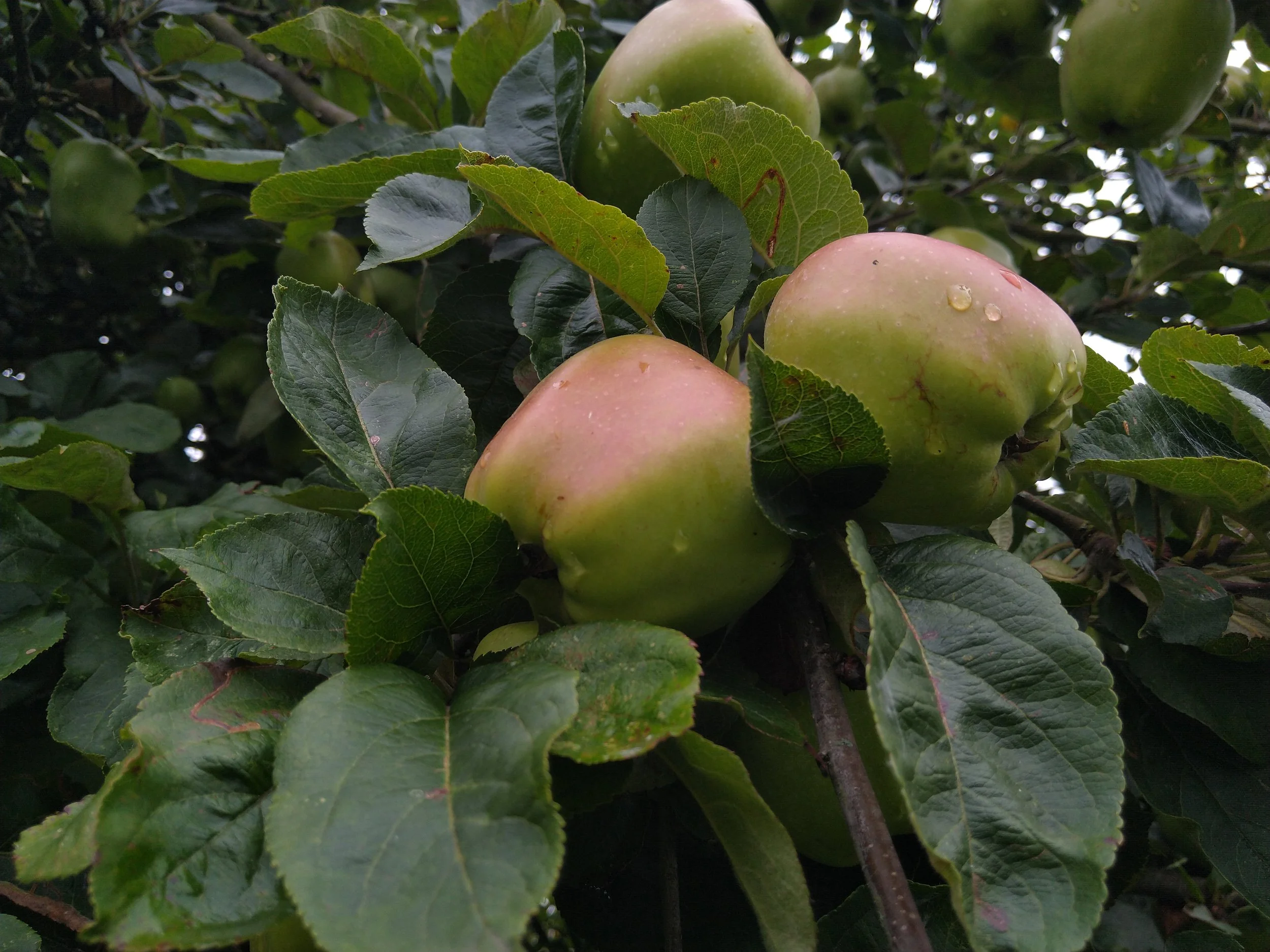










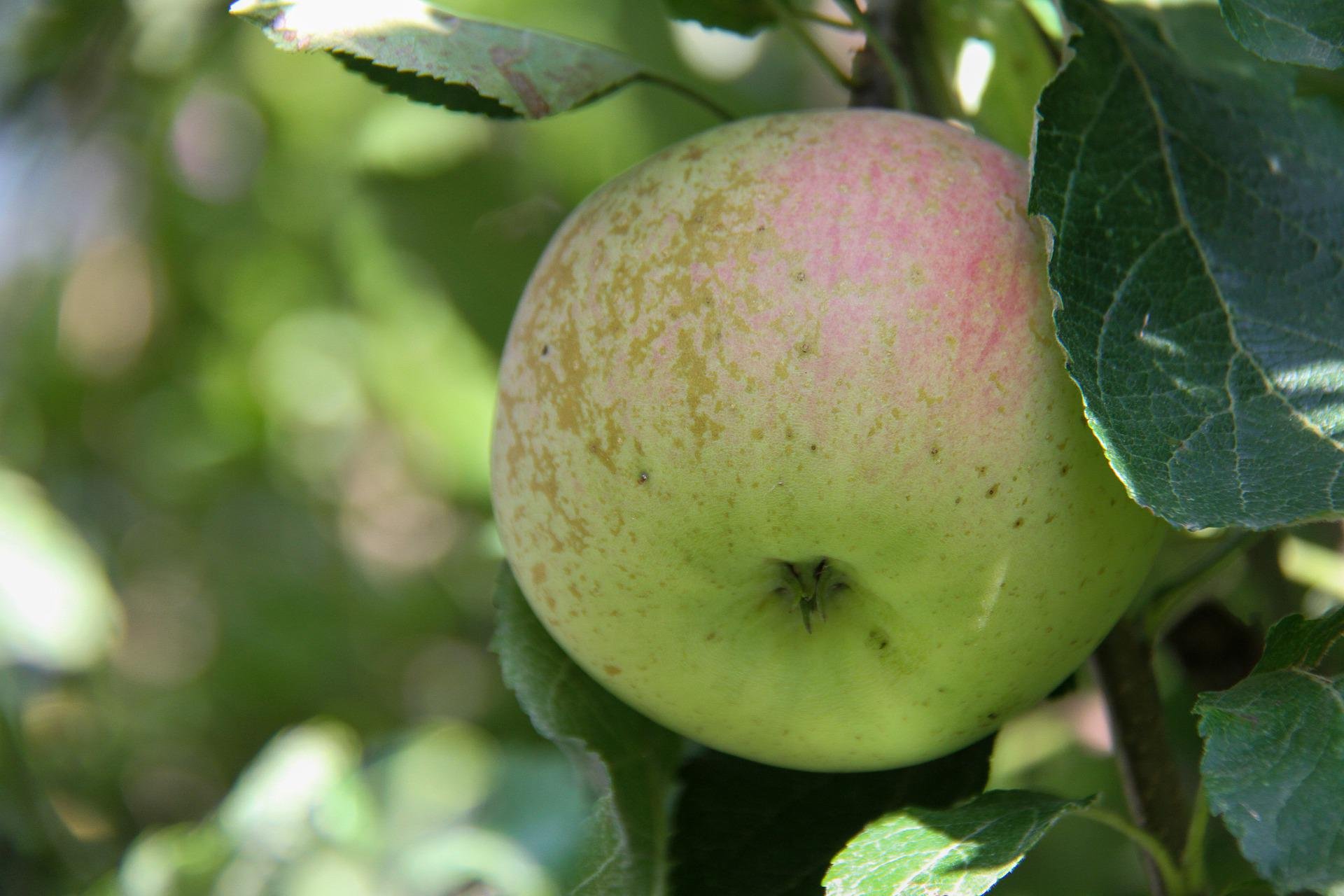

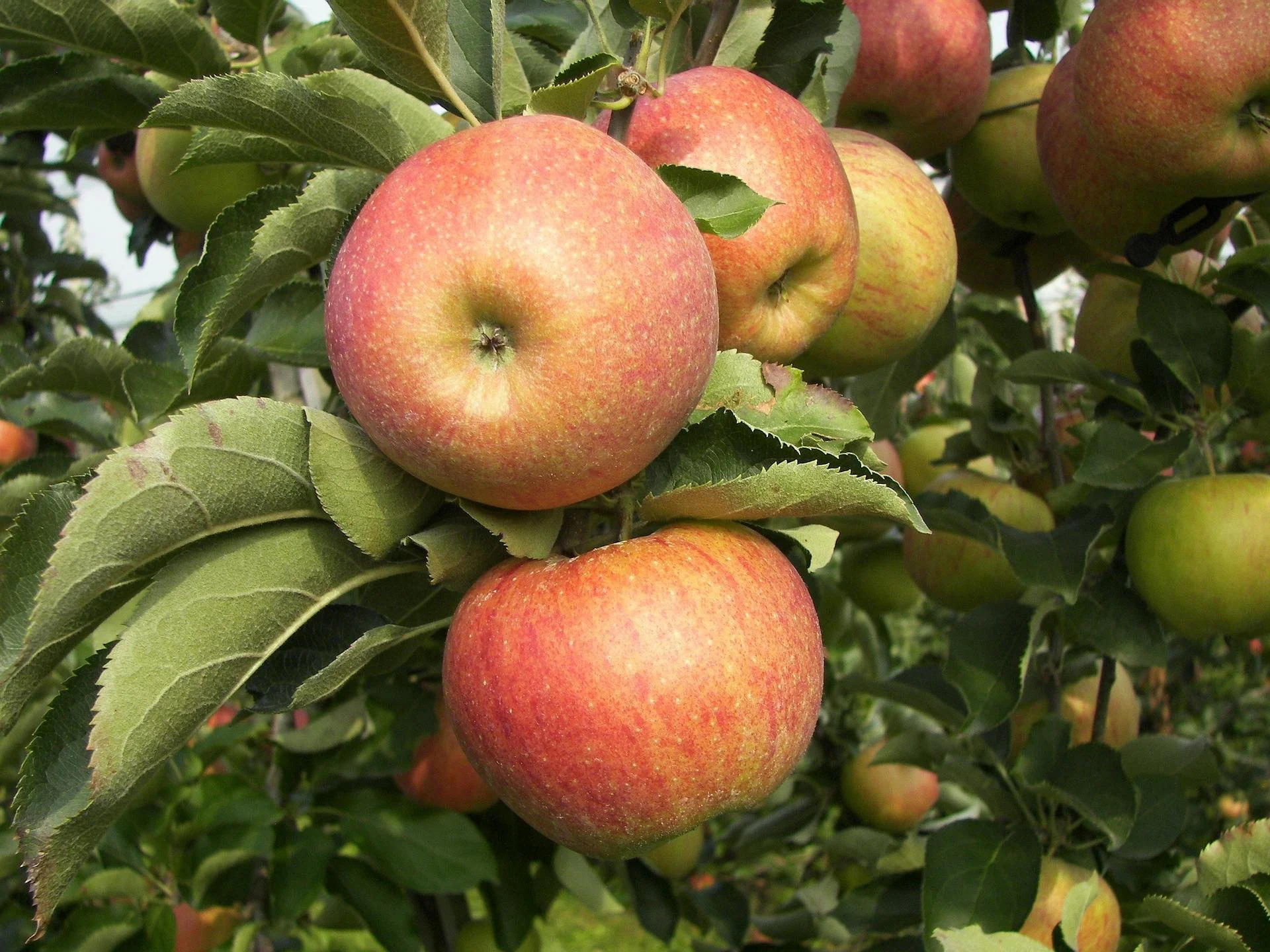
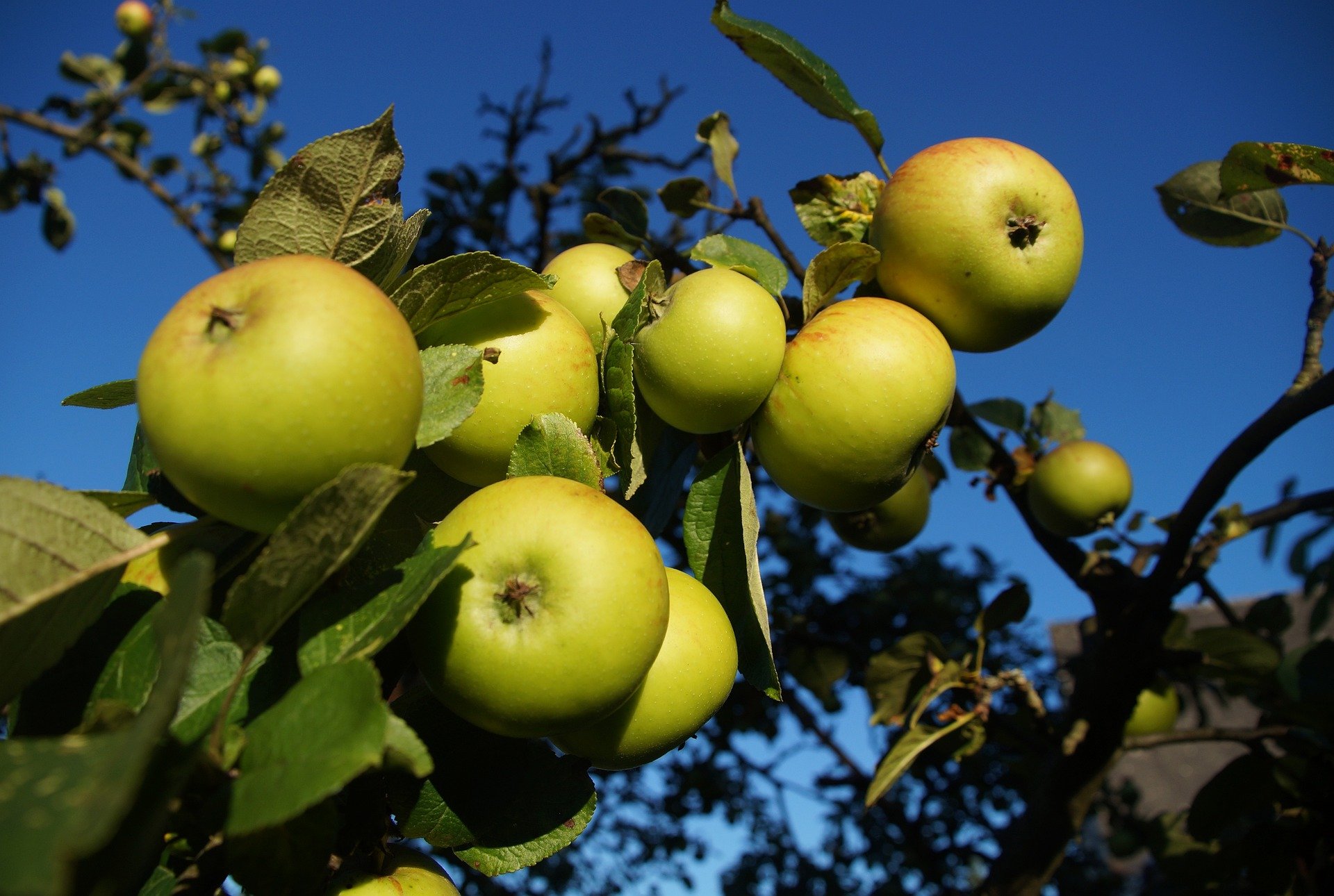
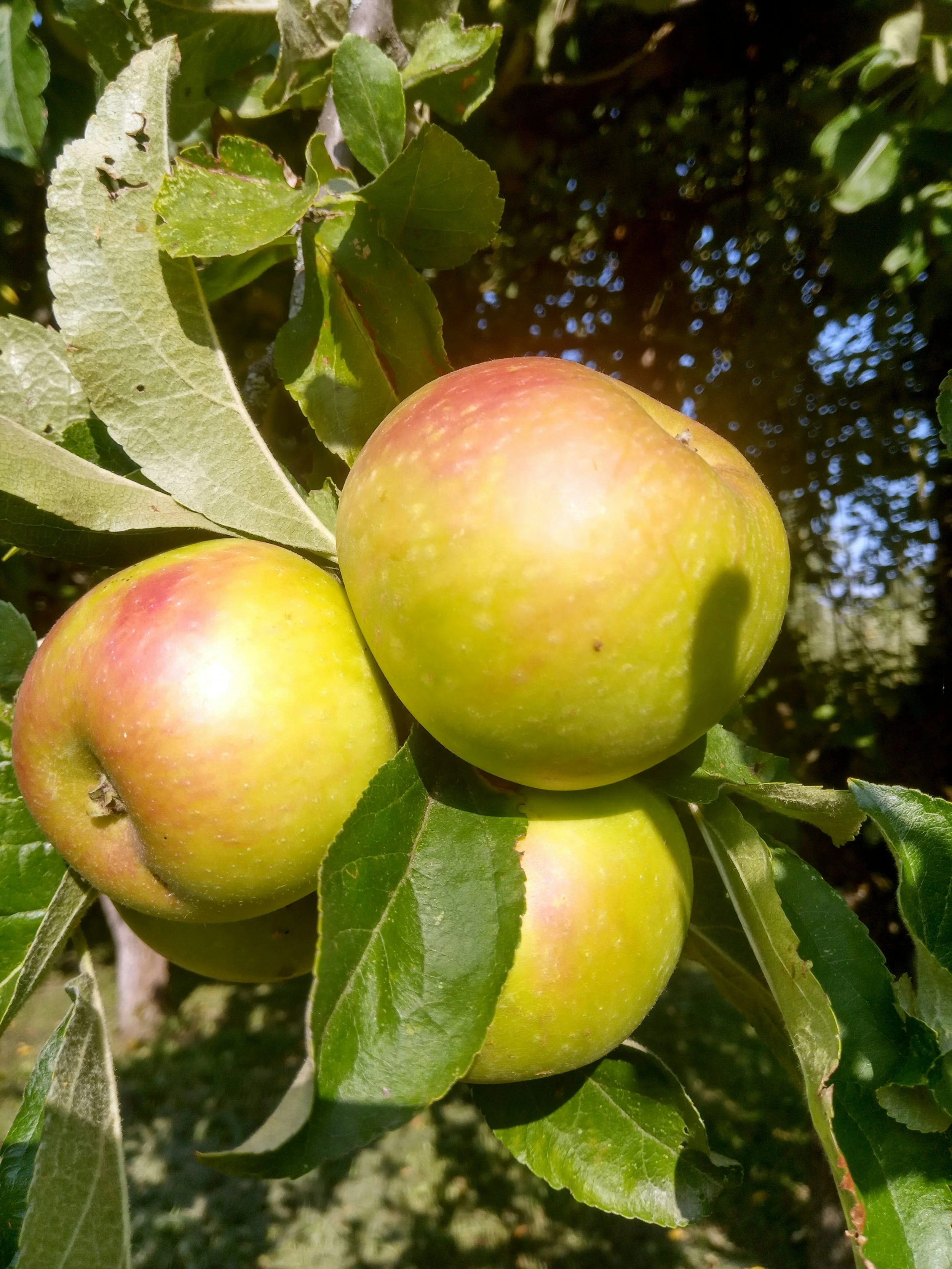
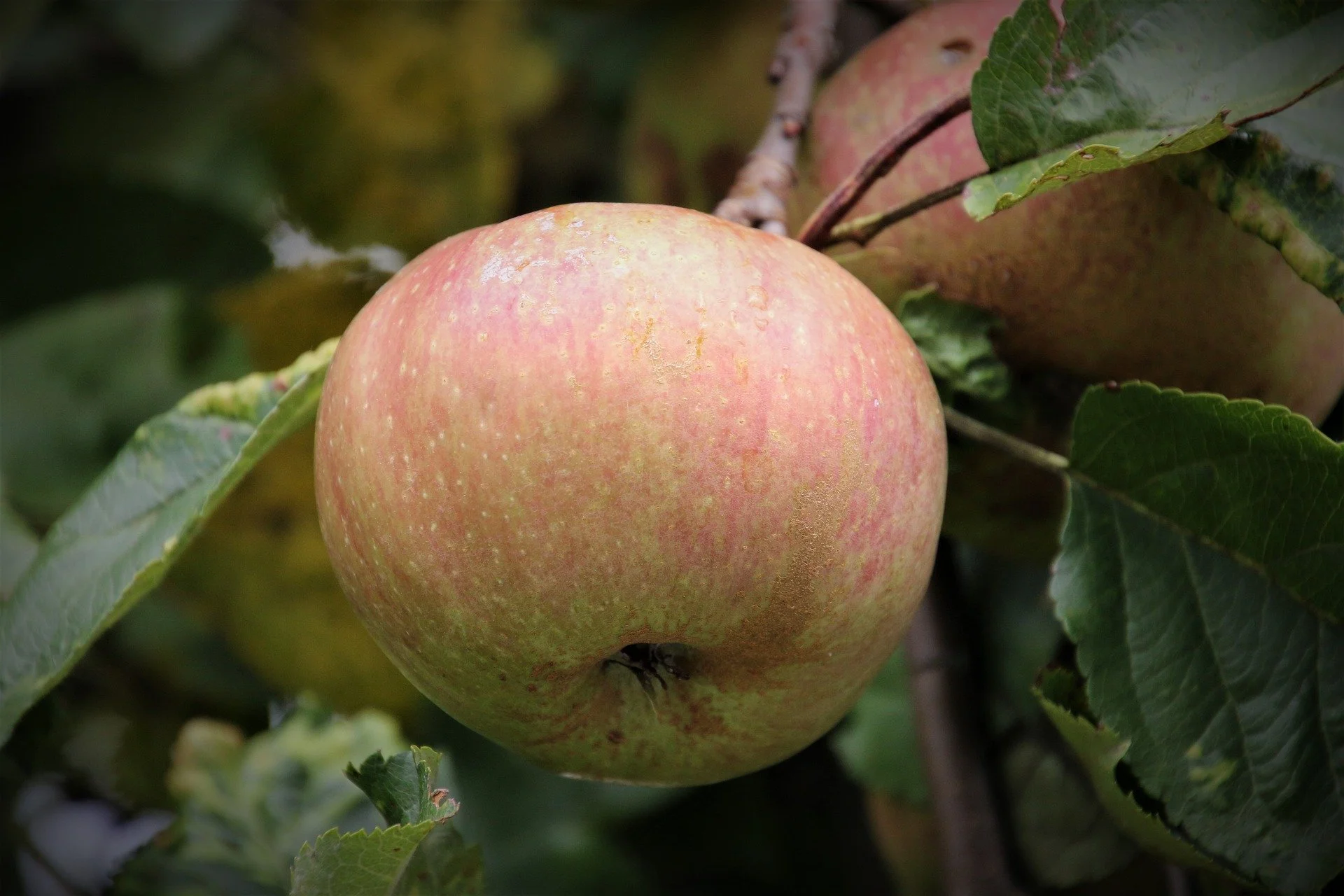
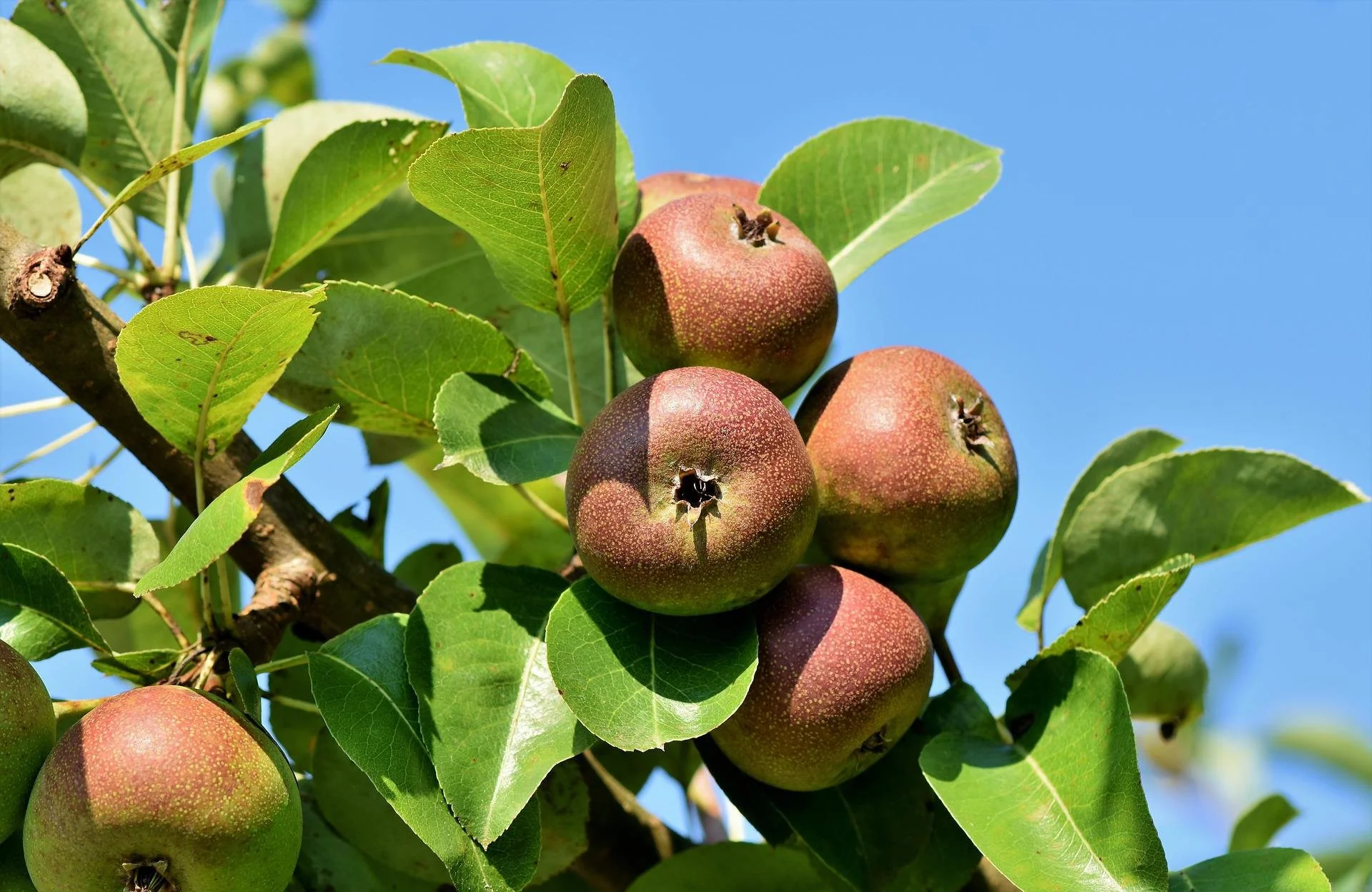

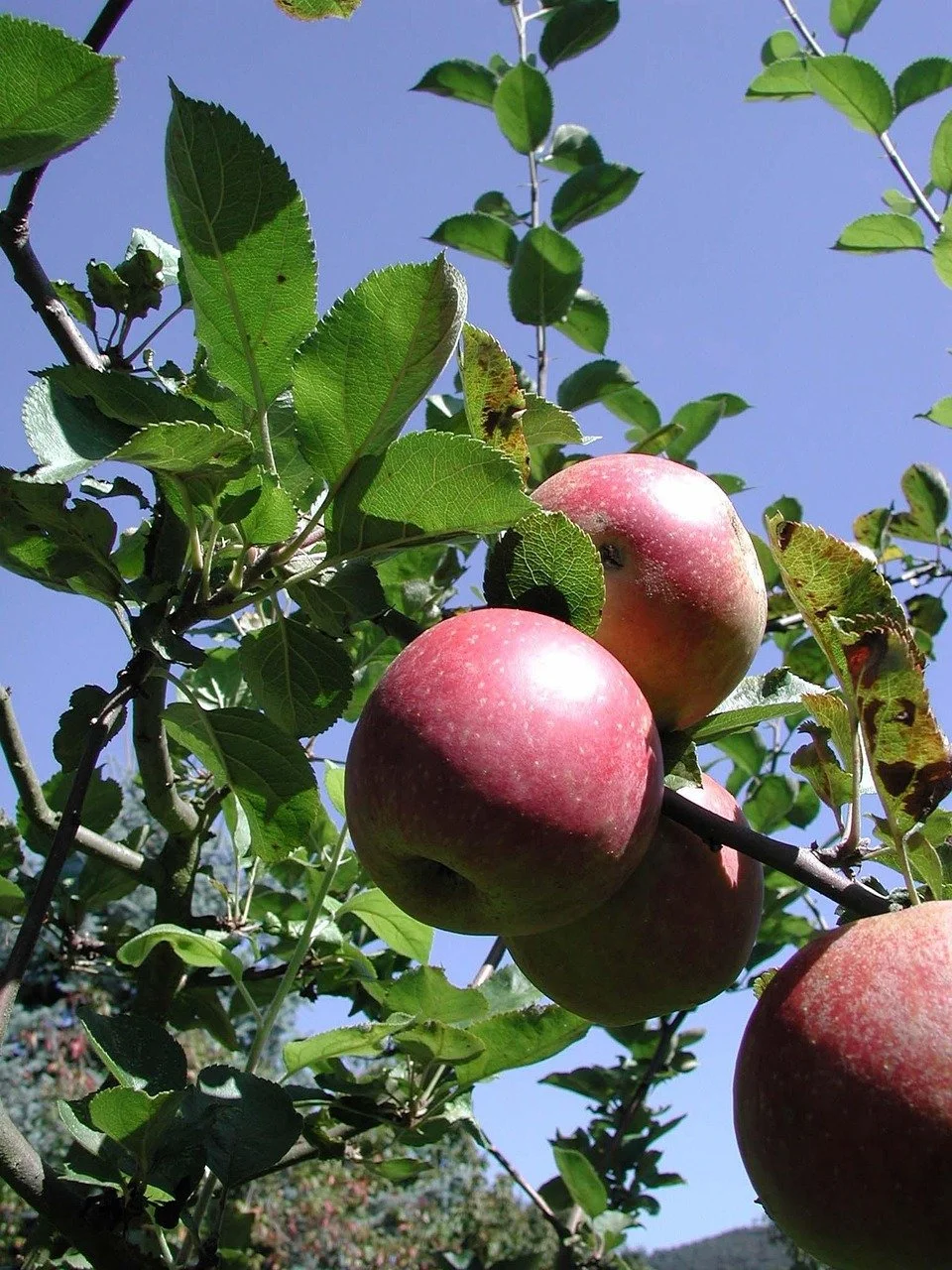




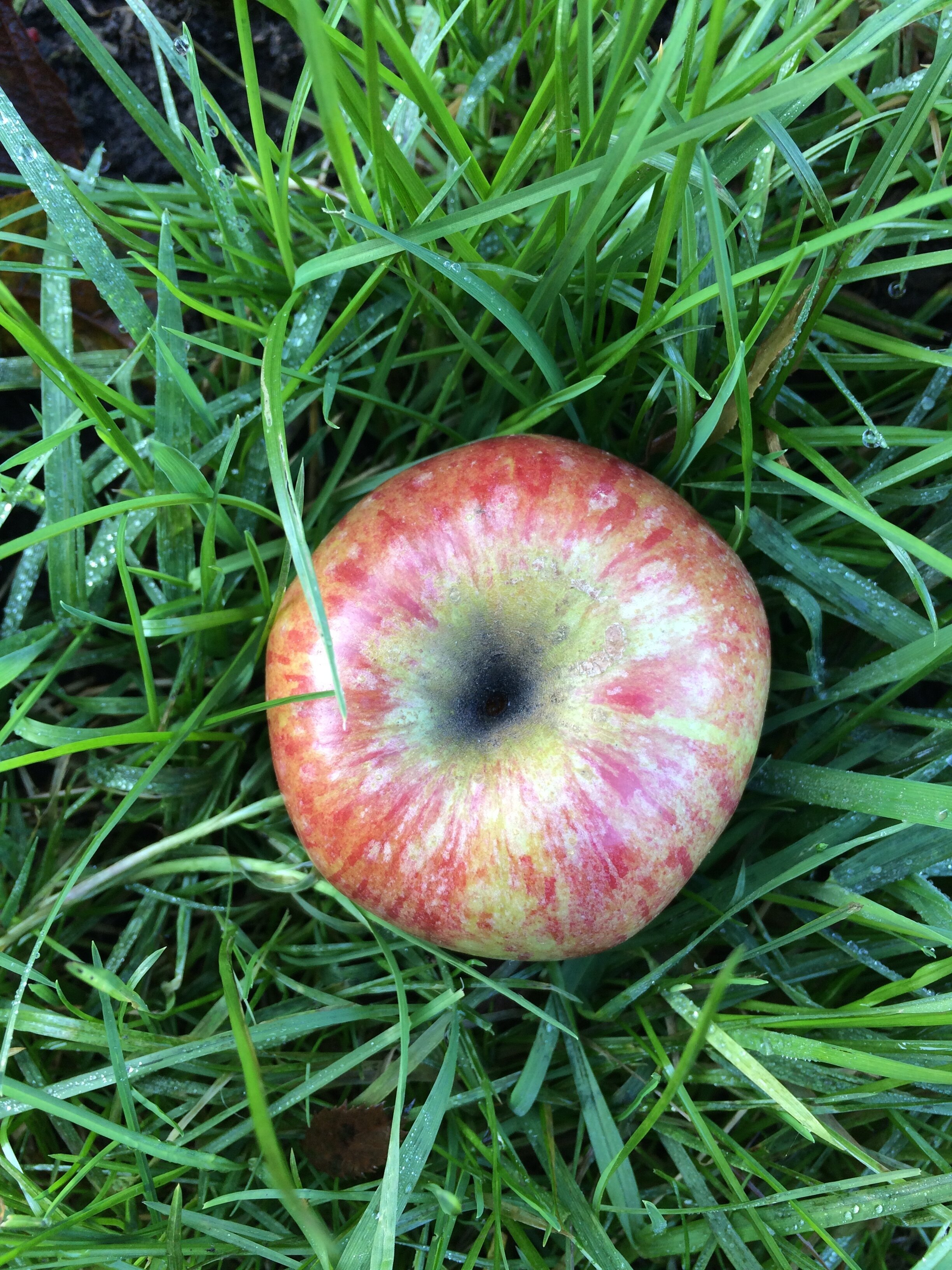



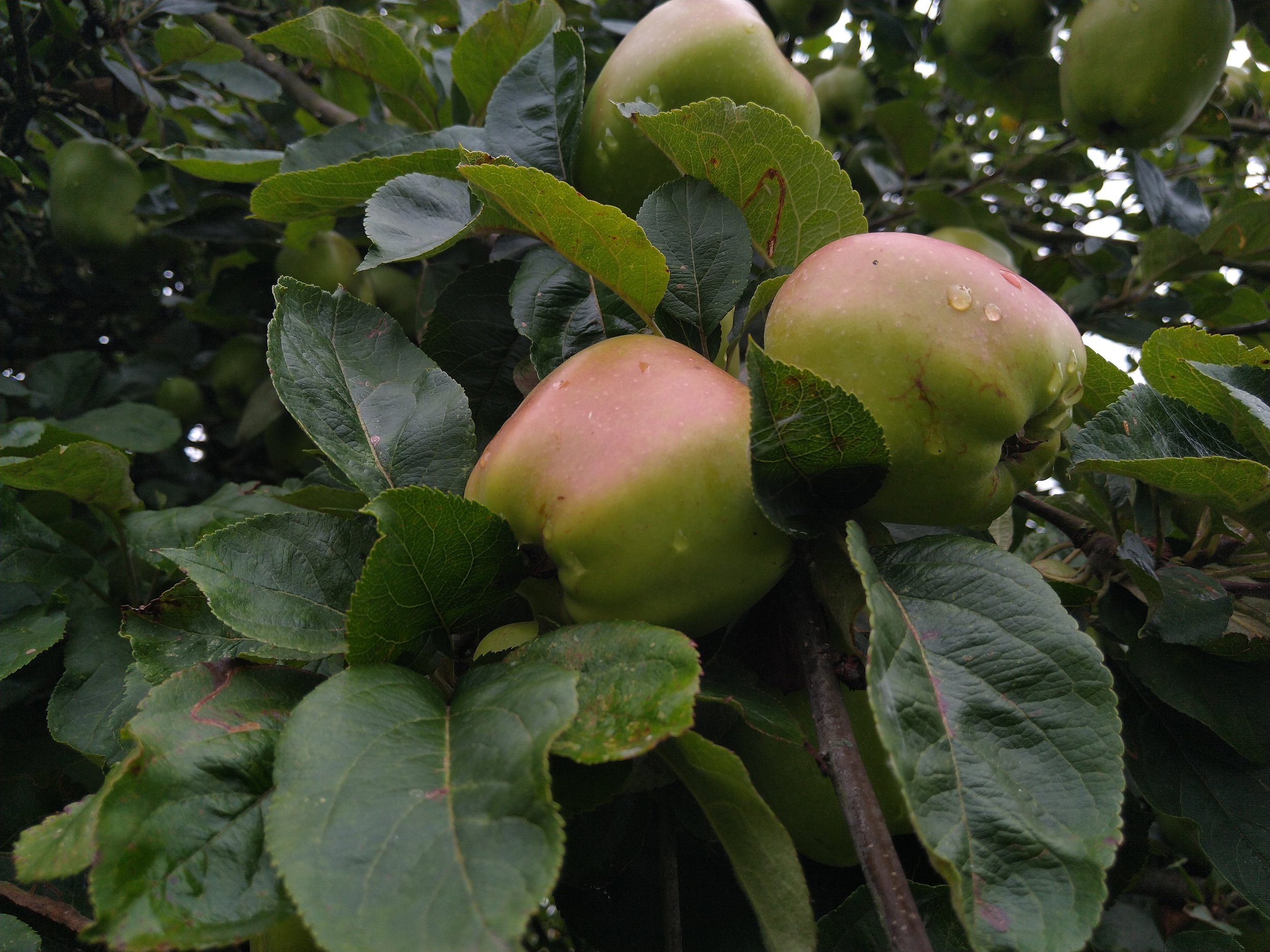









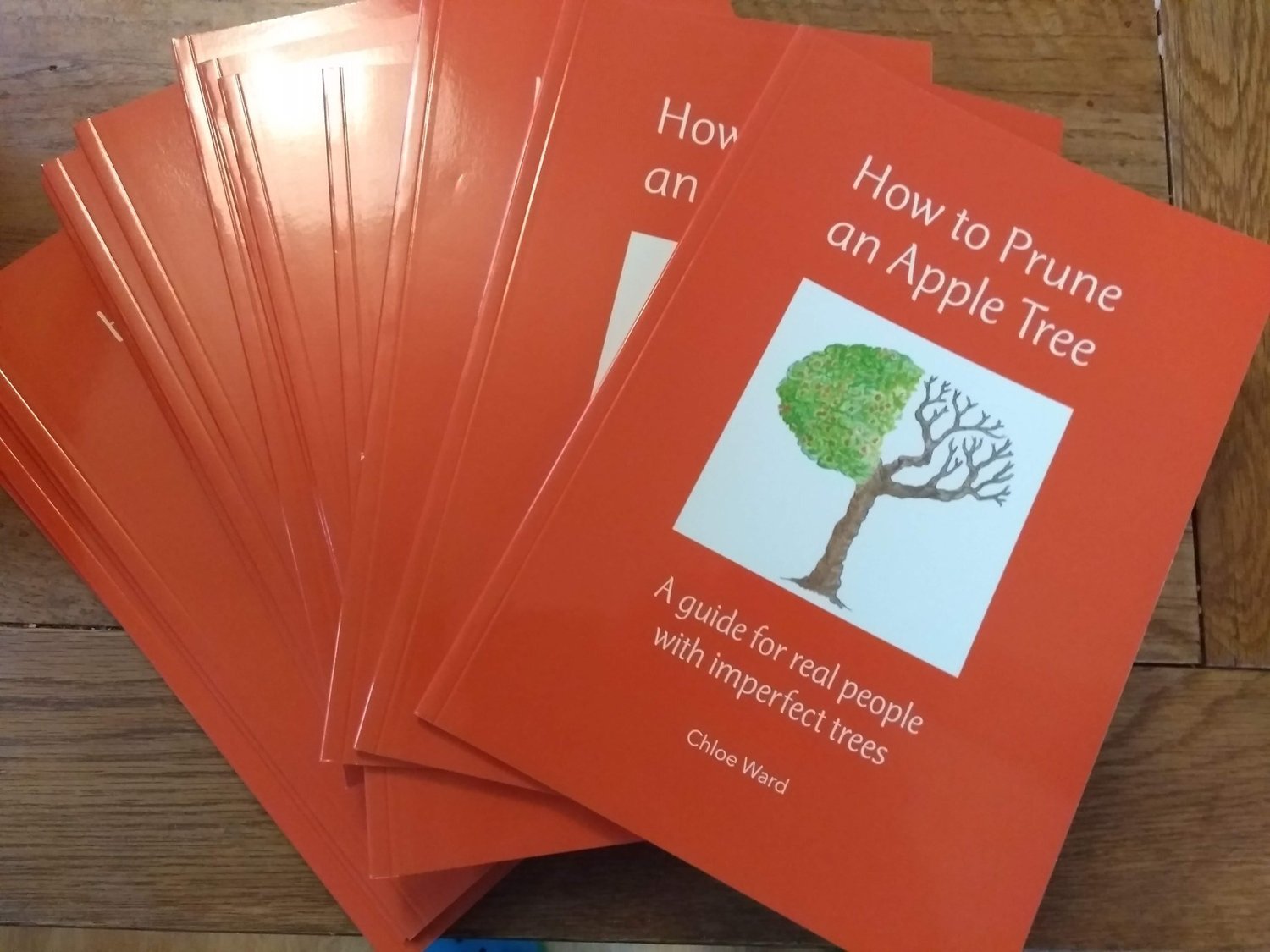
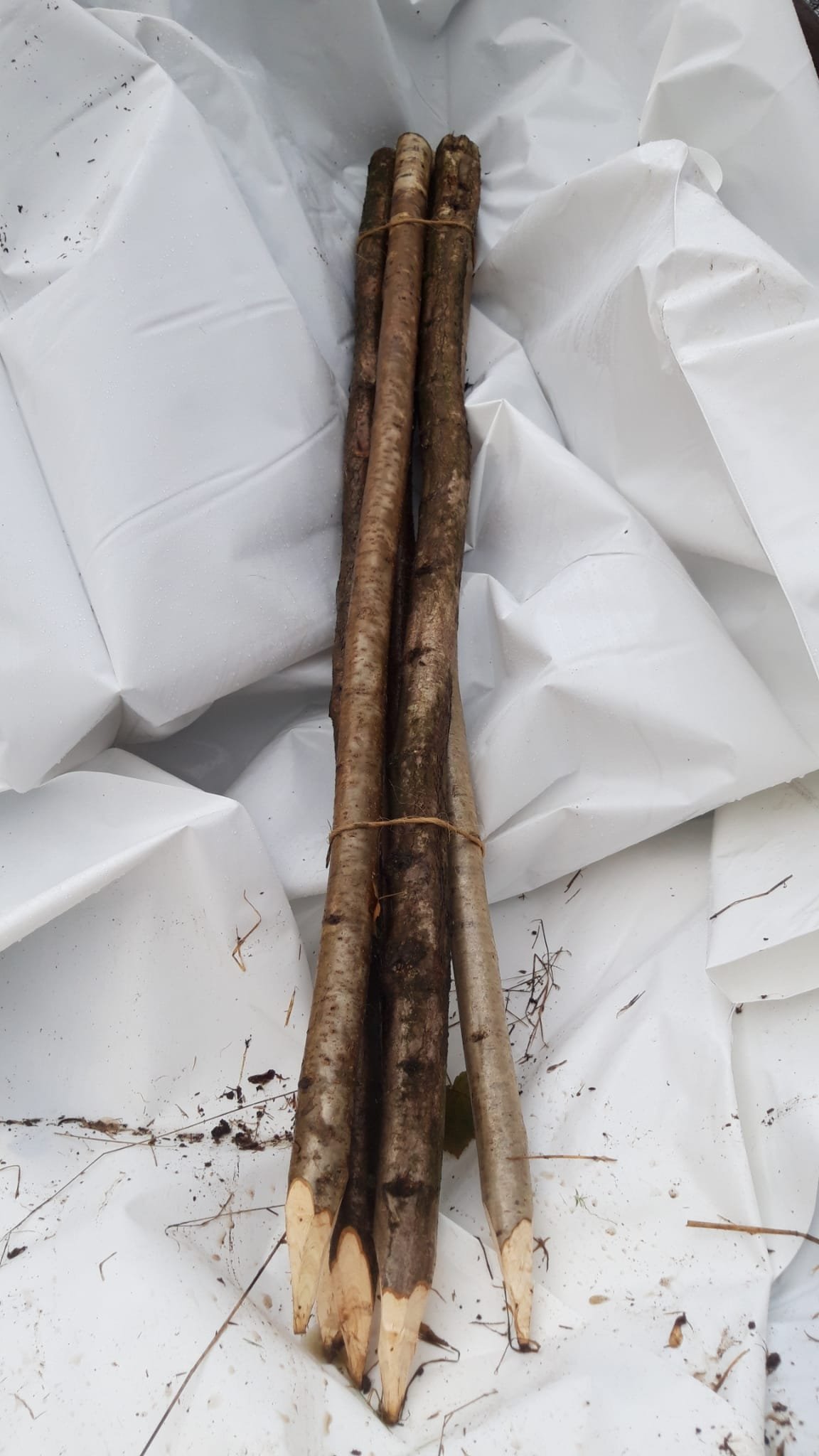
A red fleshed dessert variety with medium sized fruit. A disease resistant variety.
Type: Dessert
Season: Sep-Nov
Pollination: Self-fertile. Pollination group C